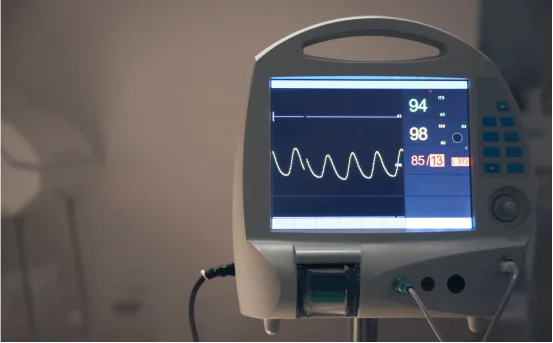Gastrostomy tube placement is a life saving procedure for individuals who are unable to take adequate nutrition orally due to a range of medical conditions. Whether it’s due to neurological disorders, cancers of the throat or esophagus, or chronic gastrointestinal disease, this treatment allows for direct feeding into the stomach, ensuring patients receive the nourishment they need for recovery and quality of life.
The importance of timely and appropriate gastrostomy treatment cannot be overstated. Without proper nutrition, the body cannot heal, fight infection, or maintain essential functions. In such cases, a gastrostomy tube (also called a G-tube) can significantly improve the patient’s health outcomes and quality of life by ensuring consistent nutritional intake.
What is Gastrostomy Tube Replacement?
A gastrostomy tube, often called a G tube, is a flexible tube inserted through the abdominal wall into the stomach. It is used for long-term enteral feeding, especially when oral intake is inadequate or impossible. The tube allows delivery of nutrition, fluids, and medications directly into the stomach, bypassing the mouth and esophagus.
G-tubes can be temporary or permanent, depending on the patient’s medical condition. They are typically made of medical-grade silicone or polyurethane and come in various designs, such as low-profile “button” tubes or traditional long tubes.
Indications for Gastrostomy Tube Placement
Gastrostomy tube placement is recommended in a variety of situations where oral feeding is not feasible or safe. Common indications include :-
-
Neurological disorders like stroke, ALS, cerebral palsy, or severe brain injury
-
Head and neck cancers that obstruct swallowing
-
Esophageal disorders such as strictures or esophageal cancer
-
Congenital abnormalities in infants or children
-
Severe anorexia or malnutrition
-
Patients undergoing prolonged mechanical ventilation
This procedure ensures nutritional support and reduces the risk of aspiration pneumonia in high-risk individuals.
Treatment of Gastrostomy Tube Placement
There are different types of gastrostomy tubes, and the selection depends on the patient’s age, anatomy, and duration of feeding requirements. Common types include :-
-
PEG (Percutaneous Endoscopic Gastrostomy) Tube :- Inserted using an endoscope without the need for open surgery. It’s the most commonly used method for long-term feeding.
-
Surgical Gastrostomy Tube :- Placed via open or laparoscopic surgery, typically when endoscopic placement is not possible.
-
Radiologic Gastrostomy Tube :- Inserted under image guidance using fluoroscopy, often in patients who are not fit for endoscopy or surgery.
Each type has specific benefits and limitations, which are discussed with the patient before the procedure.
Preparing for the Procedure
Before the procedure, the patient undergoes a thorough medical evaluation, including blood tests and imaging studies if necessary. Fasting is usually required for several hours before the insertion. The healthcare team also discusses the type of anesthesia or sedation to be used, which can vary based on the patient’s overall condition.
Antibiotic prophylaxis is sometimes administered to reduce the risk of infection. Caregivers are also briefed about post-procedure expectations and care routines.
How is the Gastrostomy Tube Placement Done?
The most common technique is percutaneous endoscopic gastrostomy (PEG). Here’s a general outline of how the procedure is carried out :-
-
The patient is sedated and placed in a comfortable position.
-
A flexible endoscope is passed through the mouth into the stomach to visualize the inner lining.
-
A small incision is made in the abdomen, and the tube is guided through the abdominal wall into the stomach with the help of the endoscope.
-
The tube is secured with internal and external retention devices to prevent displacement.
The entire procedure usually takes about 30 to 45 minutes. If endoscopic placement is not feasible, surgical or radiologic methods may be used.
Post Procedure Care and Recovery
After gastrostomy tube placement, patients are typically observed for a few hours or overnight to monitor for complications. Feeding usually begins within 24 hours, starting with clear liquids and gradually transitioning to full nutritional formulas.
Patients may experience mild discomfort, bloating, or drainage at the insertion site initially. Pain medications and antibiotics may be prescribed to ease recovery. It’s essential to keep the site clean and dry and follow specific instructions for cleaning and handling the tube.
Recovery is generally quick, and most individuals can return to normal activities within a few days. However, patients and caregivers are trained thoroughly on how to use and maintain the gastrostomy tube at home.
Potential Risks and Complications
While gastrostomy tube placement is generally safe, there are some risks associated with the procedure. These include :-
-
Infection at the insertion site
-
Bleeding
-
Dislodgement or blockage of the tube
-
Peritonitis (in rare cases)
-
Granulation tissue formation around the stoma
-
Aspiration (rare, but possible if feeding is not managed correctly)
Early detection and prompt management of complications ensure better outcomes. Regular follow-ups with the healthcare provider are important to monitor tube function and patient nutrition.
Long Term Management and Tube Replacement
Gastrostomy tubes can last for several months depending on the type. Routine care involves flushing the tube before and after feedings or medications to prevent clogging, and cleaning the area daily to avoid infections.
Over time, the tube may require replacement due to wear and tear or clogging. This can often be done without the need for another surgery, especially in the case of low profile button tubes.
Patients with long-term gastrostomy tubes benefit from regular nutritional assessments to ensure adequate calorie intake and to adjust feeding formulas as needed. Home care nurses or dietitians may assist with ongoing management.
Quality of Life After Gastrostomy Tube Placement
One of the most significant benefits of gastrostomy tube placement is improved quality of life for patients who struggle with oral intake. It helps prevent malnutrition and dehydration and enables medication administration in a safe, controlled manner.
With proper training and support, many individuals with a G tube can live active, fulfilling lives. Children can attend school, and adults can resume work or social activities. Emotional and psychological support from family and professionals is crucial in adjusting to life with a feeding tube.
Conclusion
Gastrostomy tube placement is a vital procedure that provides essential nutritional support for individuals unable to eat by mouth. From improved survival in chronically ill patients to enhanced recovery and better quality of life, this treatment offers numerous benefits when managed properly.























